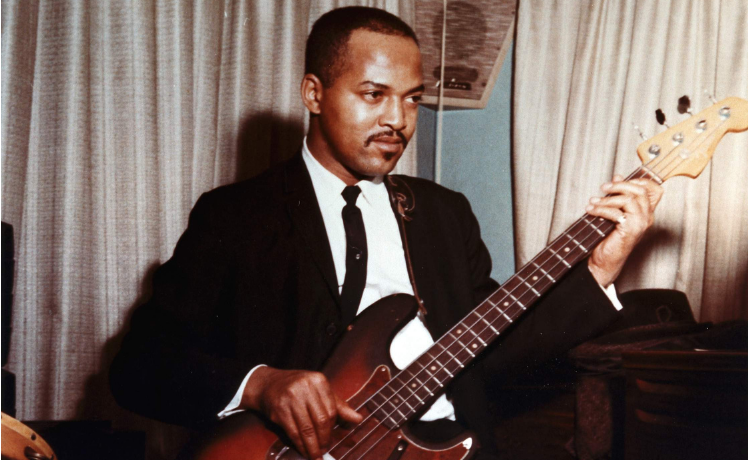James Jamerson shaped a new style of bass playing and brought what was considered by some to be an “inferior” instrument to the forefront through the use of the Fender electric bass, driven by his musical genius and incredible dexterity. Jamerson was not Motown’s first bassist, but he was certainly the first to incorporate a new perspective and intuitiveness along with his own jazz / blues formation on the R & B / pop inclinations of Motown founder Berry Gordy. The innovative bassist moved the bass R & B / pop playing from the fifth root of two standard beats for a more dynamic approach: using fast pass tones, double stops and syncopation. Jamerson’s playing was nothing short of revolutionary.
James Lee Jamerson, Jr. was born on January 29, 1936, in Charleston, NC, to the union of James Lee Jamerson, Sr. and his wife Elisabeth. His father worked in shipyards and his mother was a domestic worker. When his parents divorced, Jamerson divided his time between his grandmother who played the piano, an aunt who sang in the church choir and practiced piano at her cousin’s house. He began to develop his innate musical talents while listening to gospel, jazz and blues stations incessantly.
After a bicycle accident, he spent a year in a wheelchair. Forced to wear high shoes to walk, the incident left Jamerson limping slightly and with an embarrassment that would torment him for life. In 1953, Jamerson’s mother moved to Detroit to find work. A year later, she sent for her son. At Northwestern High, Jamerson picked up a vertical bass that was on the floor of the music room and “found” his instrument. Never a type of lone musician who plays the scales millions of times, the rising young bassist honed his skills in jam sessions, in the high school jazz band and playing with some of Detroit’s best jazz musicians, like Kenny Burrell, Yusef Lateef and Hank Jones. As his reputation grew, Jamerson started playing at dances, weddings and fraternity parties with schoolmates Richard ‘Popcorn’ Wylie (piano) and Clifford Mack (drums). Years later, Jamerson played on a successful album of a song written by Wylie, “With This Ring” by Platters (Musicor, number 12 R&B, spring 1967).
Jamerson was becoming a neighborhood hero, driving around Detroit with his upright bass coming out of the car window. Even underage, the Detroit police department gave him a license to play in clubs that served alcohol, which allowed him to get more work.
Jamerson’s bass playing style is often described as “very chromatic”. In many songs, it is. But, the use of chromatic notes is not random and is not as frequent as you might think.
Jamerson is able to define chords, making them singable and melodic. It emphasizes chord tones in strong places and embellishes with melodic scale tones in the weak points around it.
Jamerson guides you through the chord journey, adding chromatic notes and fifth approach in the right places. Their tension is what drives you to the next chord.
If you emphasize the practice of chord and arpeggio tones, you will soon hear them as a unit. When you hear the chords in a group, you will hear their strength and putting them right will become second nature.
From there, you will naturally hear where to embellish with scale and chromatic notes. Yes, it will take time, but it will take less time than if you had started the scale.
Today, many of its bass sounds are guaranteed. This is because many copied it directly or copied those who copied it. Their influence is inevitable.











9 Comments